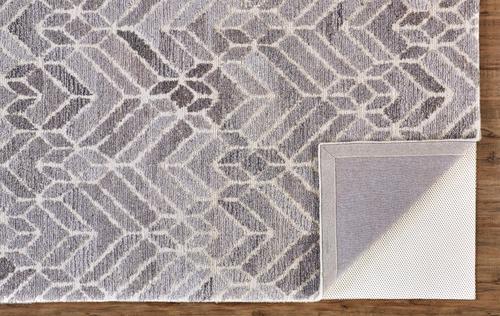Comfort technologies are famous nowadays. The interior elements that were once considered most expensive and luxurious are becoming available for all consumers. The last two decades have been a time of massive proliferation of rugs, carpets, and mats.
A Rundown of What You Need to Know About Rugs
The buyer is puzzled by choice of material, color and shape of the rug. As a rule, modern flooring must solve the following problems: aesthetics and fashion, warmth and comfort, ecology and health, sound insulation, safety, durability, ease of maintenance. There are many rugs, each of which is designed for the specific intended use (bedroom, hall, house, kitchens, bathrooms, children’s room, hotel, office, etc.).
Types of rugs and their usage
Absolutely all rugs can be divided into two categories:
- handmade rugs
- machine-made rugs
Handmade rugs
Handmade rugs are the most valuable and costly way of making elite rug models. As a rule, only natural materials of the highest quality are used. Hand-woven rugs are divided into the following types:
Lint-free rugs
Lint-free rugs are easier to make because, as a rule, only two threads are involved (longitudinal and transverse). The warp threads are pulled parallel to each other on the loom. In lint-free rugs, the weft thread is passed between the warp threads in a certain order, and thus a colorful fabric is formed.
Lint-free rugs or mats are most often subdivided into:
- Kilims – are considered double-sided rugs because the pattern is almost the same on both the front and the backside. Kilims are durable, practical, so they can often be found in hallways or kitchens.
- Sumakh – uncut long threads remain on the seamy side, allowing you to keep better warm. Therefore, the pattern is clearly visible only on the front side.
Pile rugs
The production of pile rugs is a more complex technology that requires a lot of time and labor of the weaver. Until now, the best products in the world of rugs and carpets weaving are made using the traditional pile weaving method.
In pile rugs, the ornament is formed by the knot technique. The weft thread is tied around the warp threads. The warp threads for handmade rugs are either woolen or cotton. Silk warp threads are found only in the best and most expensive rugs weaving products.
The types of knots are different, the most common being:
- Turkish or symmetrical knot
- Persian or asymmetrical
In the finished rug, the knots are hidden by a fairly high pile, which is carefully trimmed already after weaving. With the help of nodular weaving, the pile is fixed very efficiently; over time, the knots tighten and become only stronger. Therefore, hand-woven pile rugs remain in excellent preservation for tens or even hundreds of years.
Felt rugs
Felt rugs made of sheep’s wool, using the felting technique, are often referred as handmade rugs. However, they have no warp or weft threads, so they are considered less practical, and generally are not rugs as such.
Machine-made rugs
The machine is the most common production method. Modern technologies and engineering solutions can reduce the time and cost of production to a minimum. Due to the use of synthetic threads, they are more affordable and durable.
Pile and napless rugs
Pile and napless types of rugs are also made by machine, from natural and synthetic materials, respectively.
Tufted rugs
Tufted rugs are more difficult to manufacture since three threads are involved (main, forming a knot, securing a knot). The ornament is formed from knots fixed on the warp threads according to the pattern.
Wool rugs
Wool rightfully occupies a leading position as a natural material for rugs, because it is very warm and soft.
Besides, it is resistant to wear and tear. Carpets and rugs made of wool are dense and thick, so they absorb sound well and repel moisture, being a durable attribute (last from 20 to 50 years).
Of the minuses, one can notice that woolen rugs are not suitable for allergy patients and tend to accumulate a static charge and are not ready to lie under the scorching sun.
These types of rugs can be made from lamb, goat, and camel hair.
- Lamb wool is the most popular because it is economically profitable (there are many sheep).
- Goat’s wool is better than lamb’s in characteristics, but such a rug will be difficult to find. Goat hair rugs are less common for two reasons: goat breeding is more difficult than raising sheep and is raised primarily for dairy products.
- Camel wool is the best, but very expensive material, it is just perfect for rugs. This wool is stronger and better retains heat. In addition, it does not cause allergies and does not electrify. You must know that it will not be easy to get a camel wool rug.
Acrylic rug
Acrylic is an artificial substitute for wool and has many of its characteristics. Externally and to the touch, acrylic rugs strongly resemble woolen rugs, and their main advantage is that they do not cause allergies and almost do not accumulate static electricity, unlike other synthetics. They repel moisture and mold well; such a rug can be laid in the bathroom. The only drawback is that it is less wear-resistant.
Cotton rugs
Cotton rugs are placed in rooms with high humidity, as they absorb moisture well. But it must be borne in mind that cotton rugs are already inferior in resistance. In the presence of moisture, they wear out even faster. In terms of tactile sensations, they are softer than wool and easier to clean. Most likely, you will not be able to find a rug made of pure cotton; wool will be mixed there, which will only improve all the characteristics of the rug.
Polypropylene rugs
Polypropylene and olefin rugs are similar to wool and are equally popular. They are a wide assortment, really low cost, ease of maintenance and unpretentiousness, lightweight, color saturation with resistance to cleaning.
Polyester rugs
Polyester rugs are similar to woolen; they look beautiful, especially with a high pile. They are soft, warm, and easy to clean. Like all synthetics, this type of rug to the touch differs little from natural. They have less elasticity than acrylic rugs, but they are stronger and more durable.
Bamboo rugs
Both in appearance and touch, a bamboo rug will be rough in comparison to other raw materials. Such rugs are chosen for their original appearance and exotic orientation. Similar plant materials such as jute, sisal, and seaweed are also used. Rugs are durable, but not suitable for wet rooms.
Leather rugs
Leather rugs are not common, but they can fit perfectly into the design of your apartment. They are made by sewing several pieces together. They are easy to care for but wear out quickly.
Nylon rugs
These types of rugs are unpretentious to clean, stain-resistant and durable material. A nylon rug is excellent for high traffic areas.
Viscose or silk rugs
Viscose rugs strongly resemble silk in tactile sensations. And they look luxurious, mainly due to the rich pattern, giving off a glossy sheen and shimmering in the sun (all this is inherent in silk). Silk carpets and rugs are embroidered by hand from bright, thin, but durable fabrics. Viscose is much cheaper than natural silk.
Now you know what types of rugs exist, what they are made of, and what they are. You can select a rug according to your need and space.

